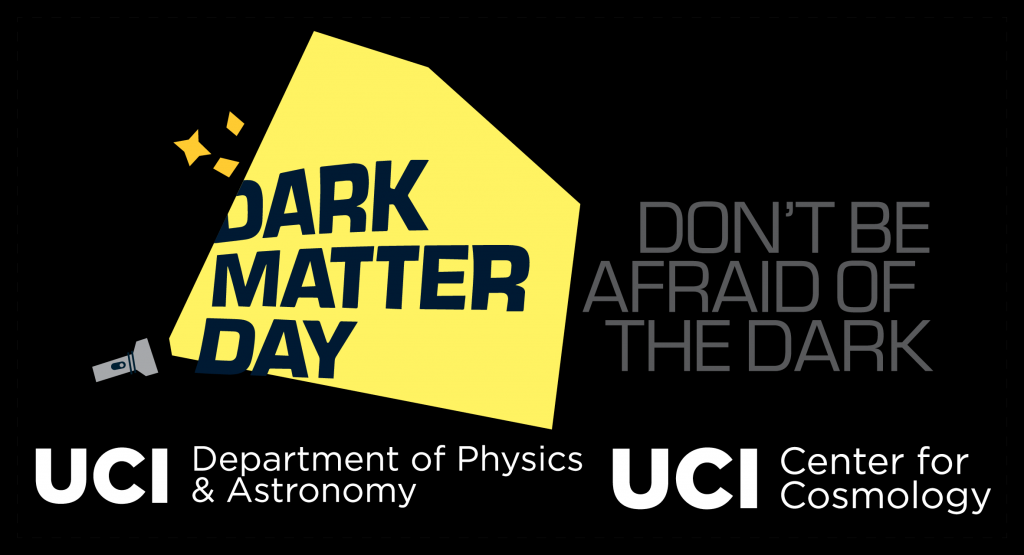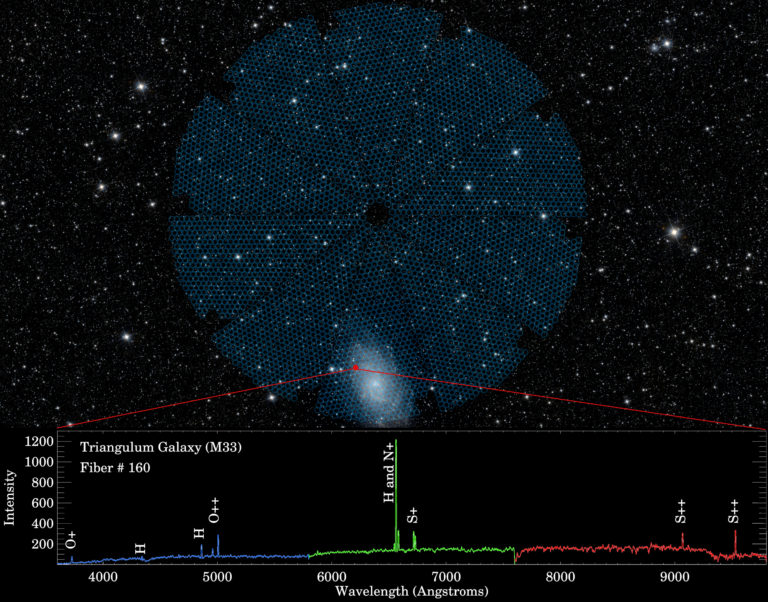The UC Irvine Center for Cosmology is celebrating International Dark Matter Day, October 31, at the Physical Sciences Plaza in front of Reines Hall. Dark matter is 85% of the matter in the Universe, but we do not know what it is. After its initial detection 86 years ago in clusters of galaxies by astronomer Fritz Zwicky, dark matter remains one of the biggest questions in science.
Dark matter is a major focus of research of many members of the UCI Center for Cosmology. So much so that it could be thought of as a “Center for Dark Matter.” Learn about a wide cross-section of it at our Dark Matter Day event!
When: Thursday, October 31: 12 noon – 1 pm
Where: Physical Sciences Plaza in front of F. Reines Hall
Hosts: Prof. Kev Abazajian and Michael Sean Wright, with Space Chunks Live!
Guests:
- Prof. Jonathan Feng – on FASER, a UC Irvine developed dark photon (and dark matter) experiment recently commissioned at CERN in Switzerland/France. See more here.
- Prof. Daniel Whiteson – LHC experimentalist whose research includes dark matter searches at the ATLAS collider detector at CERN. Prof. Whiteson is a co-host of the Explain the Universe podcast, with Ph.D. Comics author Jorge Cham. They tackle dark matter in this podcast episode. Prof. Whiteson co-writes comics including this one explaining dark matter.
- Astrophysics Graduate Student and science communicator Sophia Gad-Nasr, working on self-interacting dark matter. Read more about self-interacting dark matter in this popular article or a more technical one at this link.
- Prof. James Bullock – Dean of the School of Physical Sciences and professor doing research in galaxy formation and dark matter’s effects on galaxies. His research includes studyin effects of complex dark matter like self-interacting dark matter on galaxy formation. See interview here on the possibilities of complex dark matter.
Bonuses:
- We will have a solar telescope so that you can see the surface of the Sun—safely!
- And you’ll get to enjoy some spooky dark matter particle themed ghost cookies, all while hearing about this wonderfully mysterious substance that permeates the Universe!
See you all there! Please share the event so no one misses out on enjoying this worldwide event at UC Irvine!

